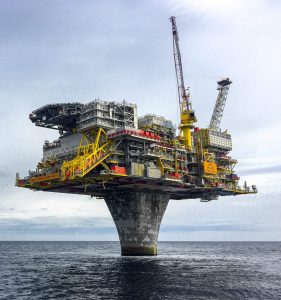Trend Overview
In 2021, Schlumberger identified their use of AI in oil & gas reduced non-productive time by around 30% and increased performance and efficiency by approximately 30%. They also shared more dramatic anecdotes, but 30% as a general stat is quite impressive.
Mckinsey, in their 2021 state of AI report, identifies the most dramatic benefits operators experience from AI is in service operations. Roughly 87% of survey respondents saw a decrease in costs as a result of AI adoption and 51% of respondents saw a decrease of more than 20%.
Based on these numbers, it seems obvious that AI is a solid investment. Here are three examples of how AI is being used.
Predictive
Historically, maintenance plans were most often time based. In recording actual failure behaviors, many studies have identified less than 20% are correlated to age or time. This means 80% of time based maintenance plans have a random success rate. With AI, there is a better way. By factoring in the patterns of multiple data points, many of these random failures can be predicted much more acurately than time based maintenance plans can.
Many other outcomes can be predicted in this way. Performance can be predicted to make supply chain more efficient. Risk levels can be predicted to keep workers safer in an environment. Delivery time and quality can be predicted to feed into a dynamic scheduling process. Predictive AI is the most mainstream use that is all around us in industry.
Prescriptive Insights
When multiple predictive results are combined with asset data, ERP data, financial data, and any number of other data sources, the AI system can deliver a course of action or prescriptive insights to not only inform, but guide behavior.
For example, a combination of elevated risk predictions could be combined with asset and process data to issue a caution alert and give specific guidance on which part of the process for which to prepare a maintenance plan. It can also tell you how urgent that plan needs to be.
Simulation Environments
As the digital model of any environment becomes better documented and its behaviour can be predicted acurately, a digital twin can be built for testing a variety of scenarios.
A digital twin can predict the system’s response to engineering changes or changes to operating parameters. It can also provide a simulated training environment for inexperienced workers who need to be trained for relatively rare scenarios.
AI provides a wide spectrum of benefits to oil & gas operating environments from simple predictive models, to complex simulation environments.
Industry POV
Cisco’s infrastructure solutions are a critical part of delivering on the promise of AI. Here are three critical roles Cisco plays in delivery.
Data Acquisition and Movement
Operational realities are represented by data that comes from the operational environment. Somehow, this data must be reliably aquired and transported to where the AI engines can consume it. This is the core of Cisco’s offering.
Cisco’s industrial network portfolio of switches, routers, and wireless access points are capable of aquiring and processing data at the edge as required. In most cases this data will also be transported back to a central data store for processing. Cisco has a variety of validated designs that meet specific industry specifications, as well as a variety of service level requirements. This ensures the data reaches the intended destination while keeping with business requirements.
Secure Data Integrity
Integrity is what makes data trustworthy. Cisco’s comprehensive security capabilities like secure network design, anomaly detection, and encryption, will ensure the risk of compromise is as low as possible. Many security capabilities are integrated into switches, routers, and access points with additional capabilities available in security appliances or comprehensive security software platforms.
Hybrid Cloud Infrastructure
Although some AI functions can be pushed out to the edge for quick local response, most AI software resides in data centers and cloud services. Cisco is a leading supplier of infrastructure for both data centers and cloud services. The spectrum of infrastructure includes network infrastructure, security infrastructure, performance monitoring infrastructure, as well as compute and storage infrastructure. Whether this infrastructure is needed in a data center or as part of connecting to a cloud service, Cisco works with customers to deploy and operate successfully.
Summary/Conclusion
Artificial Intelligence has a variety of use cases and all of them are dependent on data. Cisco has a strong track record of securely moving data from the edge, where data is aquired, to systems and software that consume it elsewhere. Cisco is also a trusted name for providing application infrastructure and performance monitoring tools for data center and cloud environments. As your AI journey develops, Cisco can provide the infrastructure to make your journey a success.
Good session